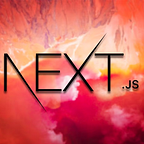Is Spotify a SaaS?
In the ever-evolving landscape of digital services, the question of whether Spotify qualifies as a Software as a Service (SaaS) has become a topic of considerable debate. At its core, Spotify undeniably provides a service through software, but let’s delve deeper into the intricacies to understand the nuances of its classification.
Understanding SaaS
Defining SaaS
Software as a Service (SaaS), a ubiquitous term in the tech realm, refers to the delivery of software applications over the internet. Users can access these applications through a web browser without the need for downloads or installations. It’s a model that has transformed the software industry, offering flexibility and scalability to businesses and consumers alike.
Key Characteristics
- Accessibility: SaaS applications are accessible through web browsers, ensuring users can connect from any device with internet access.
- Subscription-based: SaaS often operates on a subscription model, allowing users to pay for the software on a recurring basis rather than a one-time purchase.
- Automatic Updates: Updates and maintenance are handled by the service provider, alleviating the user from the burden of manual updates.
Spotify: Music Streaming or SaaS?
The Service Offering
Spotify, primarily known as a music streaming platform, has been a game-changer in the way we consume music. While its primary function is centered around streaming audio content, the underlying infrastructure and delivery model share similarities with SaaS.
Web-Based Accessibility
Spotify is accessible through web browsers, enabling users to enjoy their favorite tunes from various devices, be it a computer, tablet, or smartphone. This aligns with a fundamental characteristic of SaaS applications.
Subscription Model
Spotify operates on a subscription-based model with different tiers, offering users various features based on their subscription level. This aligns with the prevalent SaaS practice of providing scalable services with different pricing plans.
Continuous Updates
Much like SaaS applications, Spotify undergoes continuous updates to enhance user experience, introduce new features, and address security concerns. Users benefit from these improvements without the need for manual installations.
Differentiating Factors
Content-Centric Nature
While Spotify shares similarities with SaaS, it is essential to acknowledge its content-centric nature. Unlike traditional SaaS applications that focus on tools and functionalities, Spotify revolves around delivering an extensive library of music and podcasts.
Limited Functionalities Beyond Content Consumption
Spotify’s primary function is content consumption, and it may lack the extensive functionalities often associated with traditional SaaS platforms. Its core purpose is centered around delivering an exceptional music streaming experience rather than providing a suite of tools for varied business needs.
Conclusion
In conclusion, while Spotify exhibits characteristics aligning with SaaS, it is crucial to recognize its unique positioning as a content-centric platform. The debate on whether Spotify is a SaaS is nuanced, and its classification may vary based on individual perspectives. As technology continues to evolve, so too will the definitions and classifications of digital services.
